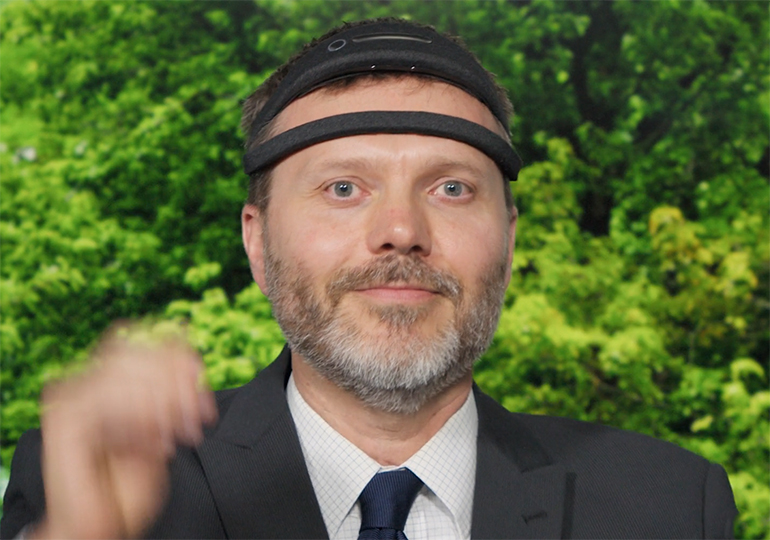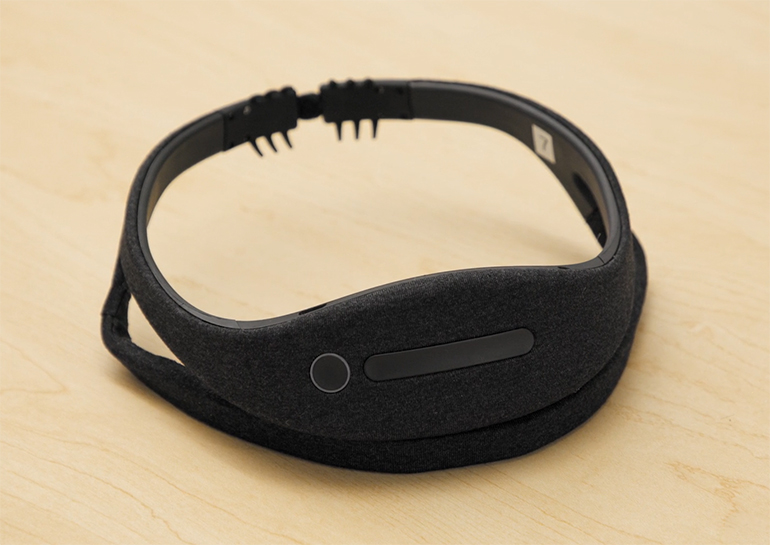
Researchers at the University of Texas at Austin have developed an electroencephalogram (EEG) sensor that is incorporated into a virtual reality headset. The technology can measure brain activity while someone is undergoing an immersive virtual reality experience. The device may assist in enhancing medical virtual reality interventions, such as those used to treat post-traumatic stress disorder or phobias, by revealing brain activity during different tasks or experiences that help clinicians to tailor treatment plans to maximize efficacy. The electrodes are soft and spongy, which makes them comfortable against the head, and they can get a good reading even if there is hair in the way.
Virtual reality has plenty to offer the medical space. Not only can it be used for neuroscience research, but it also has potential in medical interventions, such as those designed to assist people with post-traumatic stress disorder to expose themselves to triggering stimuli in a safe space. Similar exposure therapy may be beneficial for those with phobias. Virtual reality may also be useful for physical rehabilitation for those with neurological conditions, assisting in motor learning.
However, to date, assessing a VR user’s brain activity while they are immersed in a virtual world has not been that easy. The traditional electrode-covered cap would interfere with the use of a VR headset. While combined VR/EEG systems have been designed before, they have been costly and uncomfortable, using the traditional rigid comb-shaped electrodes that can penetrate through hair, but which are uncomfortable to wear for long periods.

“All of these mainstream options have significant flaws that we tried to overcome with our system,” said Hongbian Li, a researcher involved in the study. As an alternative that could fit into a VR headset, but which also provided comfort, the researchers created soft and spongy electrodes that were comfortable against the scalp, but which could still obtain a good signal through hair.
The electrodes are included in both the forehead pad and top strap of the headset, while an EEG recording device rests at the back of the headset. So far, the researchers have tested the system by measuring the brain activity of volunteers while they played a driving simulator game.
Here’s a video from the University of Colorado Anschutz Medical Campus:
Study in journal Soft Science: Hair-compatible sponge electrodes integrated on VR headset for electroencephalography
Via: University of Texas at Austin
This article was originally published on medgadget
